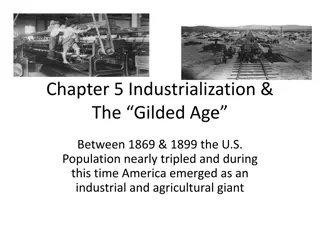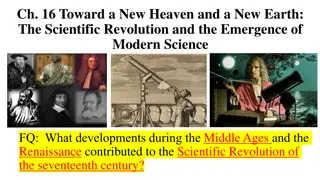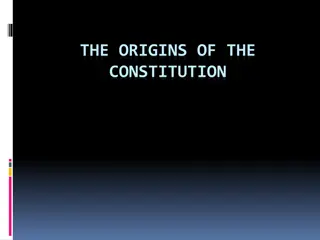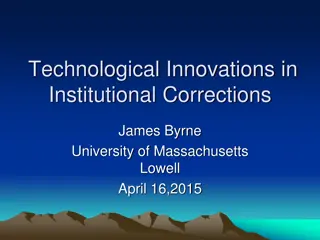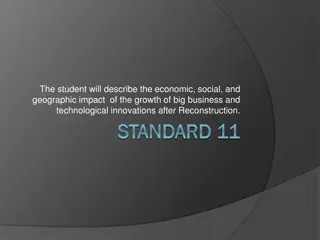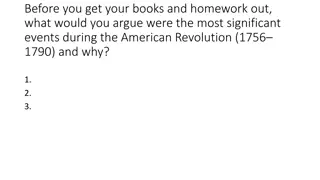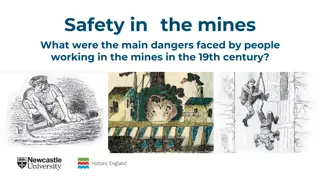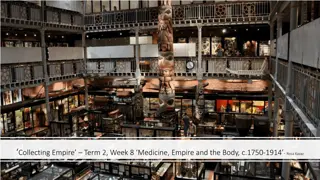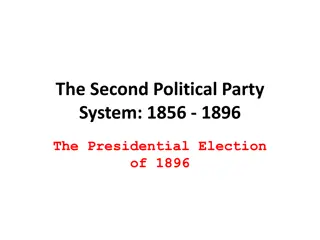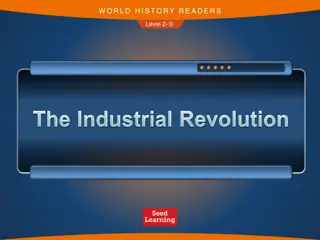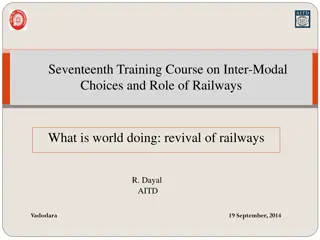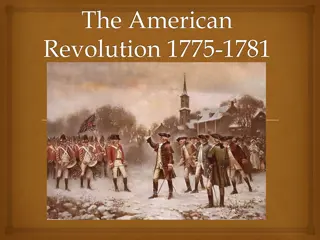Technological Revolution in American Industry: 19th Century Innovations
The Second Industrial Revolution in America led to significant advancements in technology and production processes during the late 1800s and early 1900s. Key inventions such as the Bessemer process, mass production techniques, and the development of new forms of energy like oil and electricity played a crucial role in transforming American industry. Innovators like Thomas Edison and Nikola Tesla revolutionized the use of electricity, marking a pivotal shift in how energy was harnessed and distributed across the country.
Download Presentation

Please find below an Image/Link to download the presentation.
The content on the website is provided AS IS for your information and personal use only. It may not be sold, licensed, or shared on other websites without obtaining consent from the author. Download presentation by click this link. If you encounter any issues during the download, it is possible that the publisher has removed the file from their server.
E N D
Presentation Transcript
The Expansion of American Industry (1)
OBJECTIVES: 1) Study how the Second Industrial Revolution put America on the path to vast change. 2) Analyze the importance of the inventions of the late 1800s and early 1900s.
Section 1: A Technological Revolution Key Terms: patent productivity transcontinental railroad Bessemer process mass production
Rise of inventions and technology Patent - license that gives an inventor the right to make, use, or sell an invention Between 1790 and 1860 issued 36,000 patents Between 1860 and 1890 issued 500,000 patents Investment came from Europeans and Americans to make new technology By 1900 the American standard of living was some of the highest in the world, due in part to productivity - the amount of goods and services created in a given period of time
New Forms of Energy OIL! Edwin L. Drake was the first to drill for oil, 1859 Refineries were built in order to process kerosene The automobile was invented in the late 1880s, but gasoline was seen as a waste product and thrown out.
Edison and Electricity Thomas A. Edison helped develop electric power 1876 he built the invention factory in Menlo Park, New Jersey with his earnings Edison and team developed the incandescent light bulb and a power plant to deliver electricity to homes in NYC By 1890 power plants across the country brought electricity to homes and businesses
Edison used direct current which could only travel a few miles Nicola Tesla and George Westinghouse developed alternating current which is more efficient, can be distributed using transformers, and is easier to generate (more information coming on the Tesla video Monday) General Electric (GE) and
Electricity Changed Industry Improved productivity Electric sewing machine made production increase Clothing industry created thousands of jobs Immigrants and children were a large portion of this work force Power was cheaper and more efficient than coal or wood burning The refrigerator meant food could be stored and reduce spoilage and waste without processes of salting and curing Not everyone had electricity and today there still homes across the country that do not get electric service
Better Communications Telegraph - Samuel Morse Telephone - Alexander Graham Bell By 1900 1.5 million telephones were in use
Railroads Create a National Network The Transcontinental Railroad - a railway that connected from coast to coast across the American continent The Transcontinental Railroad
The railroad was built from both sides of the country, meeting at Promontory Summit in what is now Utah on May 10, 1869 Last spike driven into the line was the golden spike The railroad carried goods and passengers Developments were constantly being made: Air brakes Telegraph to communicate with moving trains Towns and cities were built
Railroads and Industry https://www.youtube.com/watch?v=EEwKa4zKnhk Watch from start to 10:44 Railroads impacted and influenced industry in a number of ways: 1. Faster, more practical means of transporting goods 2. Lowered costs of production - shipping costs dropped and more goods could be sent 3. Created national markets - products could be sold across the country 4. Model for big business - new administrative and management practices 5. Stimulation for other industries - encouraged innovation in other industries and businesses
Bessemer Converter The Bessemer process - an easier method of making steel. Patented by Henry Bessemer The Bessemer process also made possible mass production - production in great amounts https://www.youtube.com/watch?app=desktop&v=dypdoLm4Rn8
The Brooklyn Bridge Completed on May 24, 1883 Allowed for travel other than by ferry from Manhattan to Brooklyn (NYC) over the East River Major engineering accomplishment for the time and a symbol of American success
Review Copy these down in your notes - instant study guide! Why did the nation s industrial productivity rise in the late 1800s? How did inventions such as the light bulb and the telegraph change daily life in the late 1800s? What were the advantages of the transcontinental railroad?









